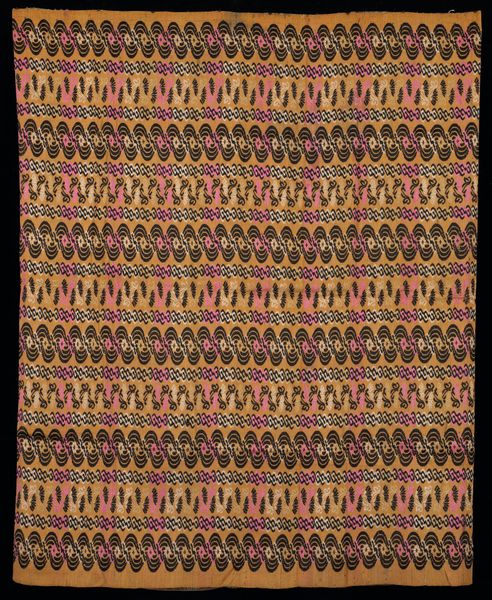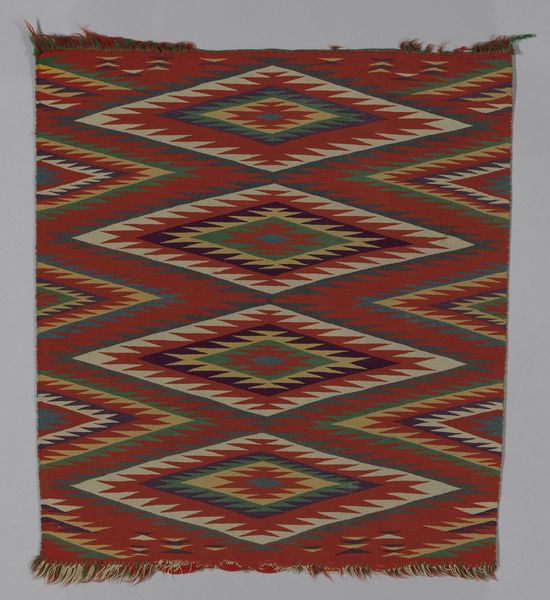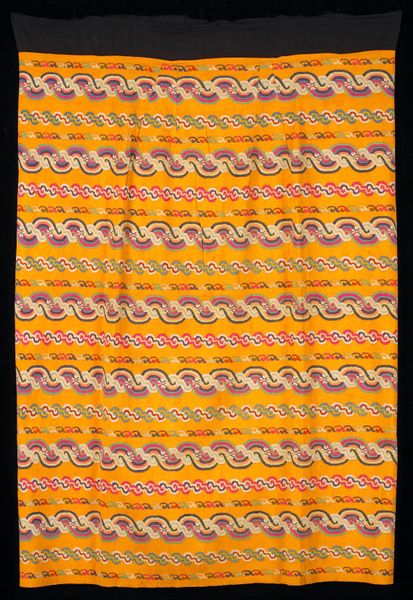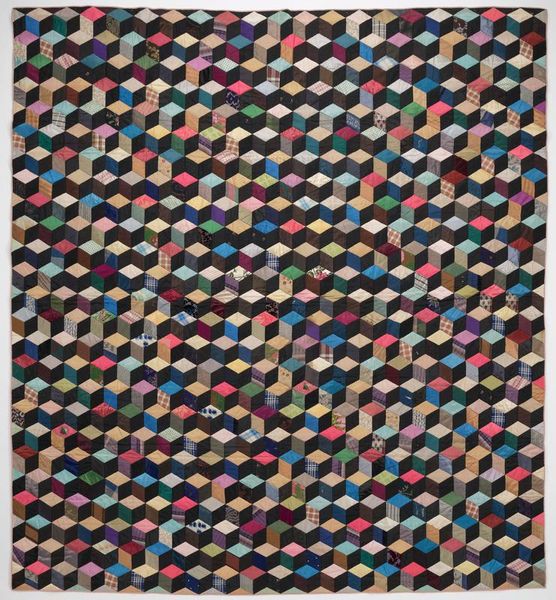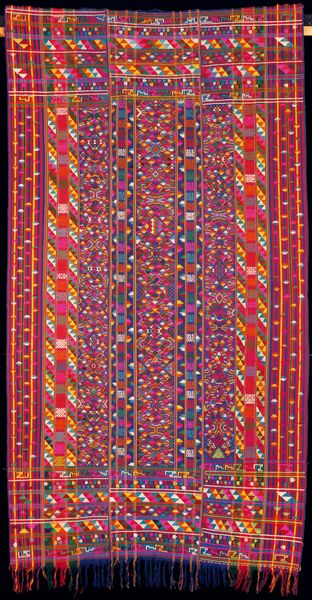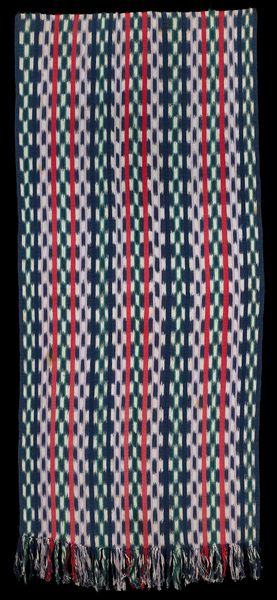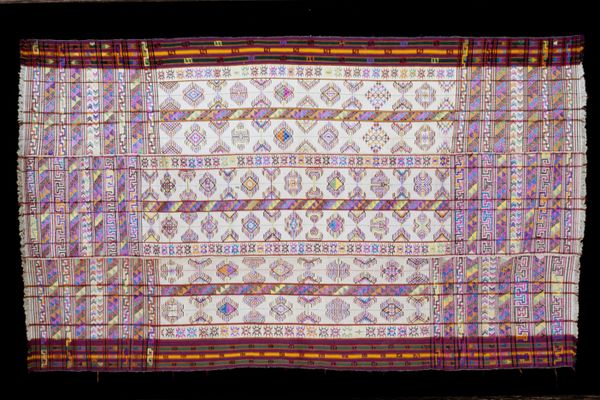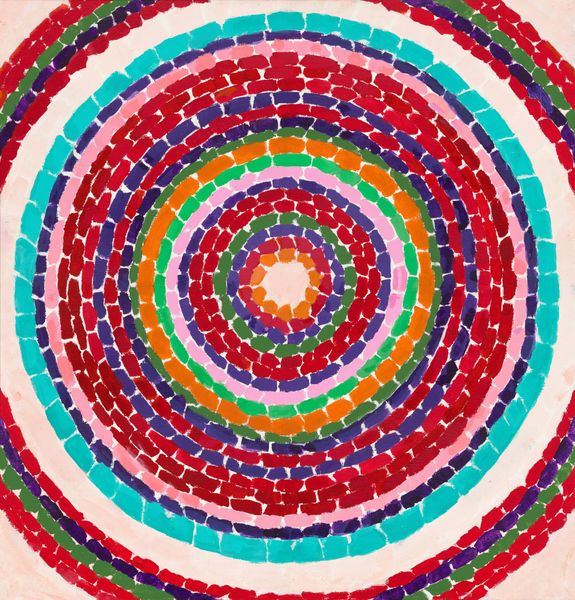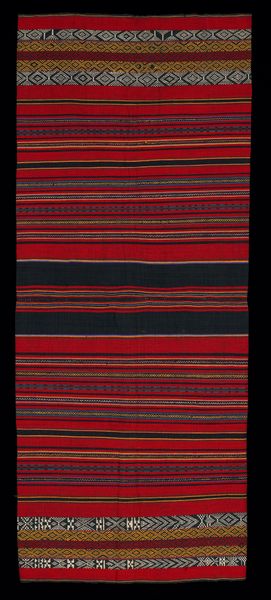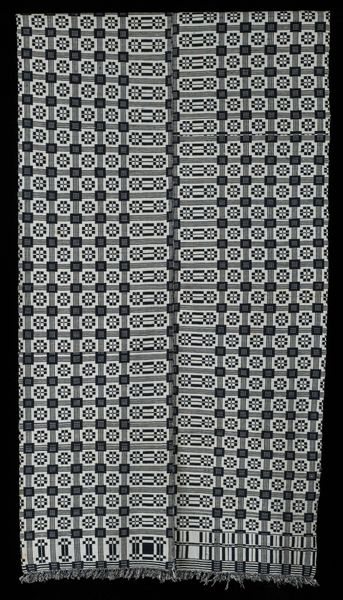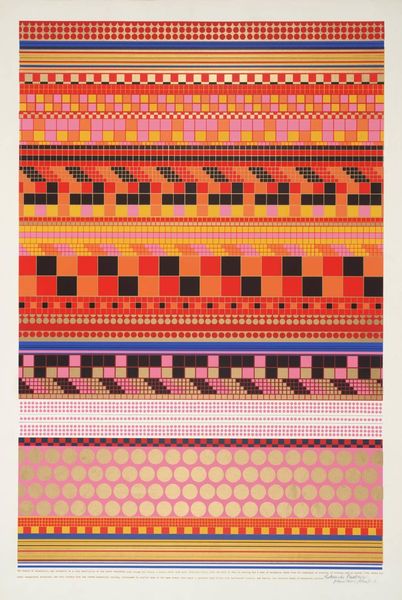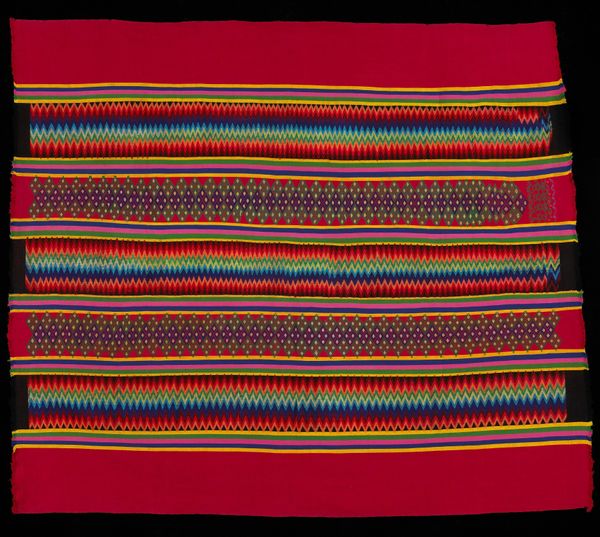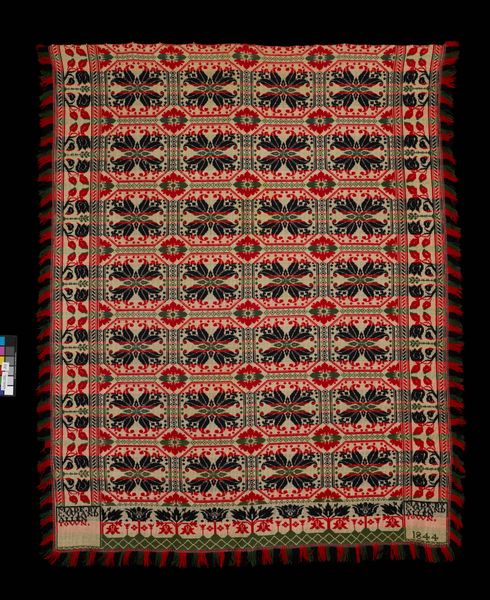
fibre-art, weaving, textile
#
fibre-art
#
weaving
#
textile
#
geometric
#
indigenous-americas
Dimensions: 98-1/2 x 46-1/2 in. (250.2 x 118.1 cm)
Copyright: Public Domain
This Saltillo serape was woven in Mexico, probably in the 19th century, by an anonymous artist. The serape, a type of shawl or blanket, isn’t just an item of clothing but a powerful symbol of Mexican identity and craftsmanship. The vibrant colors and intricate patterns speak volumes about the cultural and economic context in which it was made. Saltillo, the capital of Coahuila, was renowned for its textile production, with workshops often operating under a hierarchical structure, similar to European guilds. The serape’s design features a complex interplay of geometric motifs, reflecting both indigenous traditions and Spanish colonial influences. These designs often carried social or political meanings, signifying status, regional affiliation, or even resistance to external powers. To truly appreciate the serape, we need to delve into the archives, examining trade records, colonial reports, and indigenous accounts. These historical resources shed light on the complex interplay of cultures that shaped its creation. Examining this serape reveals the layers of history woven into its very fabric.
Comments
minneapolisinstituteofart almost 2 years ago
⋮
"Costly thy habit as they purse can buy, for the apparel oft proclaims the man," was as true for the 19th century gentleman caballero who wore this elegant serape as for the Englishman of Shakespeare's own time. The extended drape and bold coloration would have created a dramatic presentation, whether on horseback or strolling through the towns of Northern Mexico. Made in workshops of large haciendas and often traded through the town of Saltillo, these dramatic serapes were seen in such distant markets as New Mexico in the United States. They are considered to be part of the inspiration for the eye-dazzler weaving tradition of the Navajo.
Join the conversation
Join millions of artists and users on Artera today and experience the ultimate creative platform.
